Label: digital art
Wednesday 07th September 2016Art Fairs Go Digital
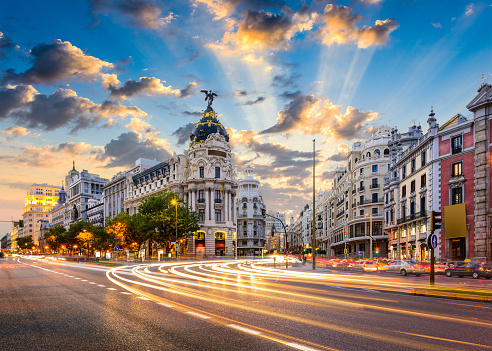
The art world is always in need of a shake-up. Whenever things get too settled down, by that point a changing of the guard is already long overdue. In what you would call 'industries', this phenomenon has come to be known as 'disruption', the latest buzzword that everyone needs to have a piece of in order to secure venture capital. While artists would never admit to it, the art world is an industry as much as any other - and so it is also subject to disruption.
That's where art fairs came into play. During the '00s and early '10s, the entire art world was shaken to its core by the sudden explosion of art fair popularity. Suddenly every single city with any kind of notable artistic community had to have its own art fair. Celebrities flocked to them, and so did artists and patrons. The gallery world was in disarray, and the auction world felt the rumblings of change.
So naturally, it was only a matter of time before the art fair world in turn was ready for disruption. Enter the Digital Madrid Art Fair!
Wait, what?
Yes, you read that right. While it's not immediately clear why it needs to have a specific location associated with it, the fifth iteration of a digital art fair has just launched. Founded by Kadeem Fletcher in 2014, version 5.0 just launched on June 16 of this year. Originally started featuring exclusively computer generated images, the project was such a success that it has grown dramatically to include photography, illustration, and fashion design - while still maintaining touch with its roots in the digital art world.
Speaking to the blog The Creators Project, Fletcher explains: "I have the foundation for delivering ideas and products, and I definitely use the skills that I've learned in school to better any creative situation I am in."
It's not really related to Madrid at all, which is arguably a bit of a weak spot in the marketing side of things, but then again Madrid represents a grounded physical location that those who are on the edge of taking the digital plunge can relate to without straying too far outside their comfort zone.
While it may be savvy marketing, is it savvy art? That really depends on what you think about the nature of art, and the nature of disruption. It could be argued that even the most basic disruption is actually an art form because it requires a deep and intrinsic understanding of something before a new reaction is created.
If that isn't true art, what is?
Posted on September 07th 2016 on 07:44pm
0 Comments
Friday 29th April 2016Artist Spotlight: Memo Akten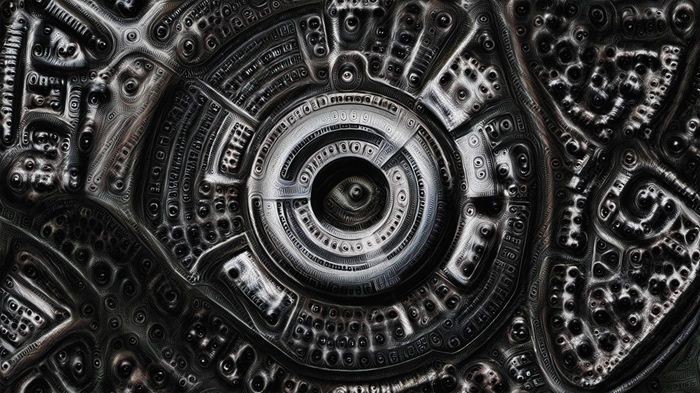
For our Artist Spotlight this week, we're going to change things up a bit and look at an artist who works in decidedly non-traditional media. Working in digital media - it's probably not still fair to call it 'new media' any more, since it's been around for quite a while by now - is one of the most exciting areas of the art world. Much of the cutting edge of art is about pushing boundaries, and few things do that better than the work of Memo Akten.
Akten was born in Istanbul, Turkey, but moved to London to attend the Goldsmith University where he is a practicing fine artist, and a PhD candidate - in artificial intelligence research. As such, much of his work is related to technology and interactive installations, and he's already amassed a long list of projects and press accolades.
One of his latest pieces of work was actually discussed in our recent article about Google's Deep Dream neural network. As part of an exhibit dedicated to showcasing the possibilities of the artificial intelligence system, Akten was commissioned to create various works, one of which titled the post then and has been included again here, titled GCHQ after the secretive signals intelligence and national security office.
For those of you who missed the discussion on Deep Dream, Akten has a few brief words about how it works.
“It might look like Deep Dream is generating say, sparrow’s faces in clouds, but what it is actually doing is generating patterned noise, which our brains try to find meaning in.” Akten. “It creates just enough of a sparrow’s head in a cloud, so that our brains find the rest. Visually, our minds and Deep Dream are doing exactly the same thing. It’s such a perfect mirror. I love that conceptual aspect.”
Akten's work isn't just limited to artificial intelligence, and has begun to break through many of the traditional boundaries that have, until recently, delineated various forms of digital media and how they can be integrated and co-opted for use in artwork. Just recently he collaborated on a dance/tech hybrid performance/installation piece titled Pattern Recognition, which was on display at Central St Martins in King's Cross in April for a very limited engagement.
“This is a new landscape. Working with these technologies is very much like cinema in the 20th century when people were just discovering the film camera, what worked and what didn’t,” he said in an interview with the Guardian.
Here's hoping that he keeps pushing the boundaries and amazing us with his work!
Posted on April 29th 2016 on 05:09pm
0 Comments
Friday 25th July 2014Tablet Sketchbooks
Sometimes it feels that being alive in the 21st century is akin to living in a science fiction future, and to a large extent, this is actually true. Portable communicators (aka mobile phones) are everywhere, and any one of them has more power than all the computers humanity had built before the year 1990 put together. It's fantastically amazing, and the art world hasn't been left behind. Digital cameras, home scanners and drawing tablets have completely changed the way we interact with computers and digital imagery, all to our gain. One thing that hasn't really changed, though, is our desire to take ourselves out into the world and create while we're out there. Practicing sketching in the studio is all well and good, but it can get pretty boring pretty quickly. There's a reason you often see art students out at fairs and other locations, practicing life drawing and sketching in real world situations. So how does the science fiction future touch them?
Tablets. Tablets were a niche market item at their outset, but rapidly have begun to supplant the laptop as the ultra-portable workstation and computer, and with good reason. Excellent screens, and reasonable battery life have solved the problems that held the early models back from widespread adoption. The development of solid application ecosystems for both Android and iOS tablets have greatly changed how useful they are, and the art world is no exception.
You may even own a tablet, without ever having considered the value that it might have as an artistic tool. Many free applications exist that offer sophisticated drawing technologies for those who are interested, although we have to recommend that you buy a stylus for doing any serious kind of sketching. Partly, this is because it most closely mimics the traditional drawing experience, which has remained more or less unchanged since the time of cave paintings with good reason, and partly because using your finger to do more than basic control of the tablet can get pretty frustrating after any length of time. If you stick with it, you could adapt, but as styluses are fairly cheap nowadays, it makes sense to at least give it a shot with that method.
As for which sketchbook application to use, we're recommend testing out a few of the free ones to help you decide what control system works best for you, but personally we're fans of Autodesk's Sketchbook app for Android. It's free, and powerful, and fun to use - and you never have to worry about losing your sketchbook again, since you can save everything you draw to a cloud-based storage system like Google Drive, and many tablets come bundled with some sort of cloud storage from the manufacturer.
Regardless of what you choose to use, go forth and explore the world with your tablet, and uncover your own science fiction future of artistic possibility!
Posted on July 25th 2014 on 08:21pm
0 Comments
Wednesday 09th July 2014The Digital Transition
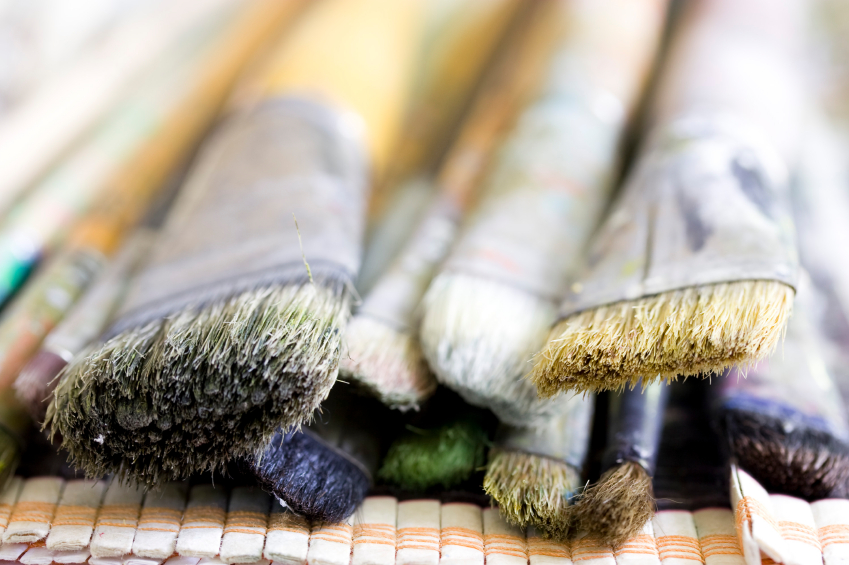
Working with physical media can be incredibly satisfying, as any tactile artist can tell you. There's something uniquely beautiful about working with your hands, and if that's your favourite thing to do, then by all means, keep it up. Many artists have recently decided to make the jump from physical to digital media, as computers grow more and more powerful and capable, and even less of a headache to use than the nightmares they were in the very early days of digital art. Making the transition from physical to digital can be quite daunting for the non-technical, but there are some major advantages to leaving the physical world behind.
First and foremost, there is the fact that if you follow proper backup procedures, it's virtually impossible to lose your work. The rule of thumb for digital media is that if it doesn't exist in AT LEAST two places, then it doesn't exist. Hard drive failures do occur, and if that was the only location you stored your artwork files, you're out of luck. Fires, theft, and other insurance nightmares plague the physical art in the same way, but if you keep a copy of your files on your computer, another copy on a USB key, and another copy on a digital storage service like Dropbox or Google Drive (both of which have free storage options), you'll never lose another piece of work.
Second, it's extremely easy to take your digital work and apply it to any number of different media. No hassle about digitizing offline work and trying to colour match and scan, you have a natively-created digital file. Making prints is easy as pie, although remember that the more prints you create of a piece, the lower the value of each print becomes. That's one area that physical media has an advantage over the digital - the original art piece is a one-of-a-kind artifact.
Finally, it's possible to create things digitally that are virtually impossible to do by hand. The same is true of physical media, of course, as sculpture and depth of media don't translate very well into the digital world of a flat screen, but that may inspire the third choice - instead of working either digitally or physically, blend both together to expand your horizons. Mixed-media pieces are very hot right now, and if you can figure out innovative ways to make the digital and the physical work together, you may help generate an entirely new style!
If you're really interested in making the transition to digital media for your artwork, check out our series of past posts about choosing a monitor, choosing mac or pc, and how to colour calibrate your monitor so that it displays accurate colours. But most of all - have fun with your art!
Posted on July 09th 2014 on 07:50pm
0 Comments
Friday 23rd May 2014Mac or PC for Your Digital Art?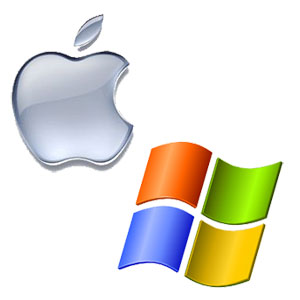
One of the bitterest rivalries that has consumed generations of digital artists is the divide between the Mac and the PC. Okay, that might be a touch hyperbolic, as they haven't existed in their present incarnations for more than a generation, but there are still bitter feuds and harsh words exchanged between the two opposing camps. When the time comes to buy yourself a new computer, it's an important decision to make. Switching between the two can be something of a hassle, but it's not impossible, although as long as Adobe and other software makers are unwilling to allow their customers to switch platforms without purchasing additional copies of programs, that can be a major added expense when it comes to switching environments.
That being said, Macs have a long tradition of being used by the more creative types of personalities (although how much of that tendency is really justified and how much of it comes from Apple's exceptional marketing capabilities is really up for debate). In the hazy days of yore when even the most basic computer cost thousands of dollars, there was a real advantage for artists to use Macs. They paid closer attention to design, displayed colours more accurately than PCs of the day, and worked easily with Postscript printers.
Those days are past - long past, in fact. At this particular moment, 95% of the internal components of Macs are exactly the same as they are in PCs, and PCs tend to be capable of running anything that a Mac can with equal facility. Adobe has improved the PC versions of their products (Photoshop, Illustrator, and InDesign, among many others) to be completely on par with the Mac versions, and PC monitors now offer exactly the same colour fidelity that Mac screens do.
The next major concern, of course, is price. We artists tend not to be rolling in cash, although we are also very conscious of image (even though we often pretend not to be). This tends to make us lean towards Macs anyways, simply because they have a cachet that PCs don't, but when you're on a budget, 9 times out of 10 you can get a PC that will run circles around a Mac at a similar price - not to mention that the cheapest Macs available tend to approach the $1000 price point, while a perfectly serviceable PC can be had for half that price.
Naturally, there are some caveats, but at this point, the long-fought battle between the two can be said to be little more than marketing hype. Ultimately, it all comes down to what you're most comfortable with, as 99% of your digital artwork will be completed equally well on either platform. If you're into high-end video editing, you may be better off with a Mac, whereas if your emphasis is on 3D rendering, you may be better off with a PC. It all comes down to what you need, not which is better.
Posted on May 23rd 2014 on 07:13pm
0 Comments
Saturday 10th May 2014Choosing the Right Monitor
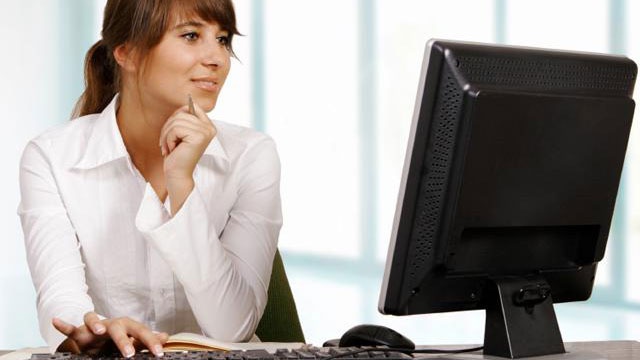
For many artists working in the various digital media, there is one thing they can't live without - a good computer! For some people, a laptop offers the best balance of portability and power, but in many cases a laptop can't provide the raw power necessary for working with extremely large and complex files. This leaves them with the choice among desktop computers, which tend to offer a great deal of flexibility and customisability, as well as the capacity for truly impressive computing power. For a digital artist, one of the most important choices in a computer setup is the monitor.
Even for those artists who choose a laptop, the amount of available screen real estate can often be a huge productivity block. Almost all laptops offer some kind of functionality for attaching an additional monitor, which can dramatically improve your workflow. But what to buy? There are a bewildering number of options available, and tons of competing technologies. Fortunately, we can help you wade through the hype and get to what really matters.
There are a couple of basic decisions that you have to make when you're buying a monitor. Primarily, what kind of connection does your computer require? DVI (digital video interface) and HDMI are the most common, but VGA connectors are also common on older laptops. You can check out your laptop or your video card to see what connectors you've got to work with.
Once you've sorted that out, the next step is to choose the right size. If you commonly work with extremely large digital images in minute detail, naturally the bigger the monitor the better, as you'll be able to zoom in close and work more freely with them, but it's important to consider your available desk space at the same time.
Next, consider the quality of the pixels in the monitor itself. Dot pitch determines how close the pixels are to each other in the monitor, and the higher the dot pitch, the clearer the image will seem. Be sure to also consider the maximum brightness of the monitor, measured in 'nits', although if you're intending to do much work for print, you'll be adjusting these settings well below the maximum capability in order to get accurate colour representations.
Once you've chosen your monitor, make sure you take the time to use a colourimeter to calibrate your screen!
Posted on May 10th 2014 on 08:08pm
0 Comments
Wednesday 30th April 2014Online Art Sales Don't Threaten the Offline Art World
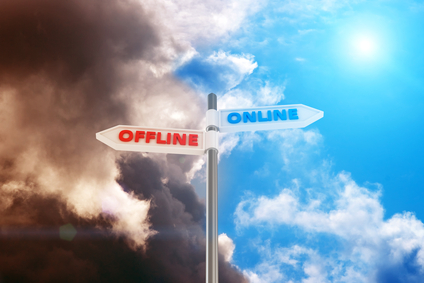
Much has been made of the e-commerce revolution, and with good reason. It has completely changed the way we interact with businesses, whether they are retail stores or service providers or any other kind of business. But one of the downsides to the widespread adoption of e-commerce has been the way that it has negatively impacted stores in the physical world, so-called 'brick and mortar' stores (as opposed to digital storefronts, aka websites). Stores have been closing doors left and right as they struggle to stay afloat in a tricky economy, especially when it's so much cheaper to move an entire business online in order to save money.
While it's taken certain areas of the retail economy more time to move towards a digital marketplace, the art world is no exception. It's now possible to buy prints from thousands of different online stores, and as you've probably learned from your Gallereo page, it's equally easy for individual artists to begin to make a name for themselves with a little bit of digital know-how and some sales talent.
Interestingly, though, instead of online art sales replacing the traditional offline world of galleries and auction houses, it appears that both sales channels are able to operate side by side with a minimum of interference. According to a report released this week by British insurer Hiscox, online fine art sales are going to more than double in the next five years, reaching an impressive $3.76 billion USD, up from its 2013 market value of $1.57 billion USD.
The reason the two markets don't collide, according to Robert Read, head of fine art at Hiscox, is “Young collectors are looking for artwork which is easy to buy and available at a wide range of prices," and when that fact is coupled with the comfort level of younger generations when it comes to making online purchases, there is a whole new market being created. So rather than supplanting the world of auction houses, the online art market should rather be considered an expansion of the art market as a whole, which makes it relatively unique in terms of the e-commerce world.
"The findings indicate that online art e-commerce will not exist as a separate entity – it will augment and co-exist with what is happening in the real, physical art world," Hiscox said.
So digital artists, take heart! Your prospects only stand to grow in the coming years, so make sure that you read up on all the best tips and tricks to ensure your digital sales success!
Posted on April 30th 2014 on 11:33pm
0 Comments
 The art world is always in need of a shake-up. Whenever things get too settled down, by that point a changing of the guard is already long overdue. In what you would call 'industries', this phenomenon has come to be known as 'disruption', the latest buzzword that everyone needs to have a piece of in order to secure venture capital. While artists would never admit to it, the art world is an industry as much as any other - and so it is also subject to disruption.
The art world is always in need of a shake-up. Whenever things get too settled down, by that point a changing of the guard is already long overdue. In what you would call 'industries', this phenomenon has come to be known as 'disruption', the latest buzzword that everyone needs to have a piece of in order to secure venture capital. While artists would never admit to it, the art world is an industry as much as any other - and so it is also subject to disruption. For our Artist Spotlight this week, we're going to change things up a bit and look at an artist who works in decidedly non-traditional media. Working in digital media - it's probably not still fair to call it 'new media' any more, since it's been around for quite a while by now - is one of the most exciting areas of the art world. Much of the cutting edge of art is about pushing boundaries, and few things do that better than the work of Memo Akten.
For our Artist Spotlight this week, we're going to change things up a bit and look at an artist who works in decidedly non-traditional media. Working in digital media - it's probably not still fair to call it 'new media' any more, since it's been around for quite a while by now - is one of the most exciting areas of the art world. Much of the cutting edge of art is about pushing boundaries, and few things do that better than the work of Memo Akten. Sometimes it feels that being alive in the 21st century is akin to living in a science fiction future, and to a large extent, this is actually true. Portable communicators (aka mobile phones) are everywhere, and any one of them has more power than all the computers humanity had built before the year 1990 put together. It's fantastically amazing, and the art world hasn't been left behind. Digital cameras, home scanners and drawing tablets have completely changed the way we interact with computers and digital imagery, all to our gain. One thing that hasn't really changed, though, is our desire to take ourselves out into the world and create while we're out there. Practicing sketching in the studio is all well and good, but it can get pretty boring pretty quickly. There's a reason you often see art students out at fairs and other locations, practicing life drawing and sketching in real world situations. So how does the science fiction future touch them?
Sometimes it feels that being alive in the 21st century is akin to living in a science fiction future, and to a large extent, this is actually true. Portable communicators (aka mobile phones) are everywhere, and any one of them has more power than all the computers humanity had built before the year 1990 put together. It's fantastically amazing, and the art world hasn't been left behind. Digital cameras, home scanners and drawing tablets have completely changed the way we interact with computers and digital imagery, all to our gain. One thing that hasn't really changed, though, is our desire to take ourselves out into the world and create while we're out there. Practicing sketching in the studio is all well and good, but it can get pretty boring pretty quickly. There's a reason you often see art students out at fairs and other locations, practicing life drawing and sketching in real world situations. So how does the science fiction future touch them? Working with physical media can be incredibly satisfying, as any tactile artist can tell you. There's something uniquely beautiful about working with your hands, and if that's your favourite thing to do, then by all means, keep it up. Many artists have recently decided to make the jump from physical to digital media, as computers grow more and more powerful and capable, and even less of a headache to use than the nightmares they were in the very early days of digital art. Making the transition from physical to digital can be quite daunting for the non-technical, but there are some major advantages to leaving the physical world behind.
Working with physical media can be incredibly satisfying, as any tactile artist can tell you. There's something uniquely beautiful about working with your hands, and if that's your favourite thing to do, then by all means, keep it up. Many artists have recently decided to make the jump from physical to digital media, as computers grow more and more powerful and capable, and even less of a headache to use than the nightmares they were in the very early days of digital art. Making the transition from physical to digital can be quite daunting for the non-technical, but there are some major advantages to leaving the physical world behind. One of the bitterest rivalries that has consumed generations of digital artists is the divide between the Mac and the PC. Okay, that might be a touch hyperbolic, as they haven't existed in their present incarnations for more than a generation, but there are still bitter feuds and harsh words exchanged between the two opposing camps. When the time comes to buy yourself a new computer, it's an important decision to make. Switching between the two can be something of a hassle, but it's not impossible, although as long as Adobe and other software makers are unwilling to allow their customers to switch platforms without purchasing additional copies of programs, that can be a major added expense when it comes to switching environments.
One of the bitterest rivalries that has consumed generations of digital artists is the divide between the Mac and the PC. Okay, that might be a touch hyperbolic, as they haven't existed in their present incarnations for more than a generation, but there are still bitter feuds and harsh words exchanged between the two opposing camps. When the time comes to buy yourself a new computer, it's an important decision to make. Switching between the two can be something of a hassle, but it's not impossible, although as long as Adobe and other software makers are unwilling to allow their customers to switch platforms without purchasing additional copies of programs, that can be a major added expense when it comes to switching environments. For many artists working in the various digital media, there is one thing they can't live without - a good computer! For some people, a laptop offers the best balance of portability and power, but in many cases a laptop can't provide the raw power necessary for working with extremely large and complex files. This leaves them with the choice among desktop computers, which tend to offer a great deal of flexibility and customisability, as well as the capacity for truly impressive computing power. For a digital artist, one of the most important choices in a computer setup is the monitor.
For many artists working in the various digital media, there is one thing they can't live without - a good computer! For some people, a laptop offers the best balance of portability and power, but in many cases a laptop can't provide the raw power necessary for working with extremely large and complex files. This leaves them with the choice among desktop computers, which tend to offer a great deal of flexibility and customisability, as well as the capacity for truly impressive computing power. For a digital artist, one of the most important choices in a computer setup is the monitor. Much has been made of the e-commerce revolution, and with good reason. It has completely changed the way we interact with businesses, whether they are retail stores or service providers or any other kind of business. But one of the downsides to the widespread adoption of e-commerce has been the way that it has negatively impacted stores in the physical world, so-called 'brick and mortar' stores (as opposed to digital storefronts, aka websites). Stores have been closing doors left and right as they struggle to stay afloat in a tricky economy, especially when it's so much cheaper to move an entire business online in order to save money.
Much has been made of the e-commerce revolution, and with good reason. It has completely changed the way we interact with businesses, whether they are retail stores or service providers or any other kind of business. But one of the downsides to the widespread adoption of e-commerce has been the way that it has negatively impacted stores in the physical world, so-called 'brick and mortar' stores (as opposed to digital storefronts, aka websites). Stores have been closing doors left and right as they struggle to stay afloat in a tricky economy, especially when it's so much cheaper to move an entire business online in order to save money.



